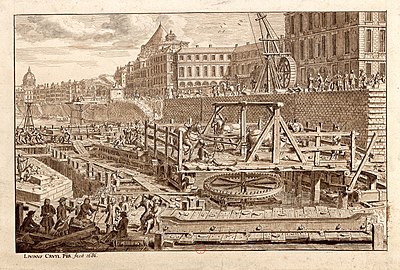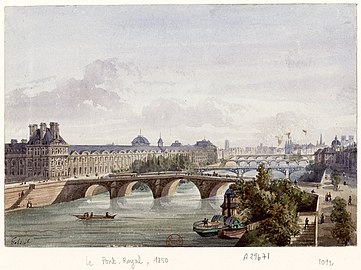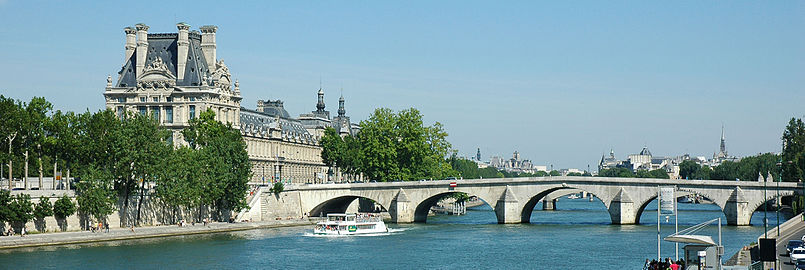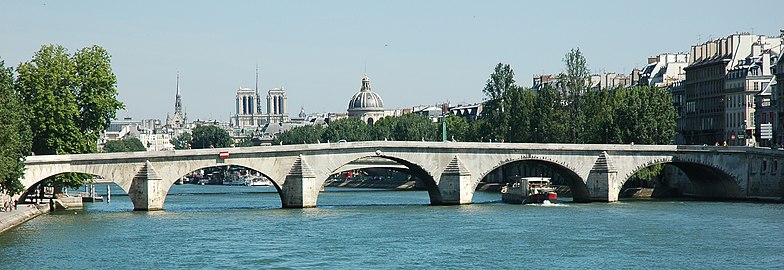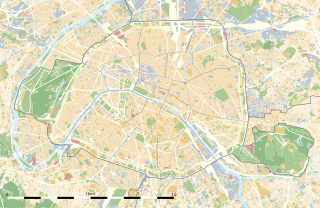
The Île de la Cité is an island in the river Seine in the center of Paris. In the 4th century, it was the site of the fortress of the Roman governor. In 508 Clovis I, the first King of the Franks, established his palace on the island. In the 12th century it became an important religious center, the home of Notre-Dame cathedral, and the royal chapel of Sainte-Chapelle, as well as the city's first hospital: the Hôtel-Dieu. It is also the site of the city's oldest surviving bridge, the Pont Neuf.

The oldest traces of human occupation in Paris, discovered in 2008 near the Rue Henri-Farman in the 15th arrondissement, are human bones and evidence of an encampment of hunter-gatherers dating from about 8000 BC, during the Mesolithic period. Between 250 and 225 BC, the Parisii, a sub-tribe of the Celtic Senones, settled on the banks of the Seine, built bridges and a fort, minted coins, and began to trade with other river settlements in Europe.
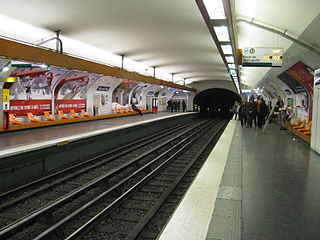
Rue du Bac is a station on Line 12 of the Paris Métro in the 7th arrondissement.

The Tuileries Palace was a royal and imperial palace in Paris which stood on the right bank of the River Seine, directly in front of the Louvre. It was the usual Parisian residence of most French monarchs, from Henry IV to Napoleon III, until it was burned by the Paris Commune in 1871.

The following is a timeline of the history of the city of Paris, France.

Vernon is a commune in the French department of Eure, administrative region of Normandy, northern France.

The Louvre Palace, often referred to simply as the Louvre, is an iconic building of the French state located on the Right Bank of the Seine in Paris, occupying a vast expanse of land between the Tuileries Gardens and the church of Saint-Germain l'Auxerrois. Originally a military facility, it has served numerous government-related functions in the past, including intermittently as a royal residence between the 14th and 18th centuries. It is now mostly used by the Louvre Museum, which first opened there in 1793.

The Pont de Sully is a bridge across the Seine in Paris, France.

The Pont du Carrousel is a bridge in Paris, which spans the River Seine between the Quai des Tuileries and the Quai Voltaire.

The Pavillon de Flore, part of the Palais du Louvre in Paris, France, stands at the southwest end of the Louvre, near the Pont Royal. It was originally constructed in 1607–1610, during the reign of Henry IV, as the corner pavilion between the Tuileries Palace to the north and the Louvre's Grande Galerie to the east. The pavilion was entirely redesigned and rebuilt by Hector Lefuel in 1864–1868 in a highly decorated Napoleon III style. The most famous sculpture on the exterior of the Louvre, Jean-Baptiste Carpeaux's The Triumph of Flora, was added below the central pediment of the south facade at this time. The Tuileries Palace was burned by the Paris Commune in 1871, and a north facade, similar to the south facade, was added to the pavilion by Lefuel in 1874–1879. Currently, the Pavillon de Flore is part of the Musée du Louvre.

Rue du Bac is a street in Paris situated in the 7th arrondissement. The street, which is 1150 m long, begins at the junction of the quais Voltaire and Anatole-France and ends at the rue de Sèvres.
The Pont Notre-Dame is a bridge that crosses the Seine in Paris, France linking the quai de Gesvres on the Rive Droite with the quai de la Corse on the Île de la Cité. The bridge is noted for being the "most ancient" in Paris, in the sense that, while the oldest bridge in Paris that is in its original state is undoubtedly the Pont Neuf, a bridge in some form has existed at the site of the Pont Notre-Dame since antiquity; nonetheless, it has been destroyed and reconstructed numerous times, a fact referred to in the Latin inscription on it to honor its Italian architect, Fra Giovanni Giocondo. The bridge once was lined with approximately sixty houses, the weight of which caused a collapse in 1499.

The Pont de la Concorde is an arch bridge across the Seine in Paris connecting the Quai des Tuileries at the Place de la Concorde and the Quai d'Orsay. It has formerly been known as the "Pont Louis XVI", "Pont de la Révolution", "Pont de la Concorde", "Pont Louis XVI" again during the Bourbon Restoration (1814); in 1830, its name was changed again to Pont de la Concorde, the name it has retained to this day. It is served by the Metro stations Assemblée nationale and Concorde.
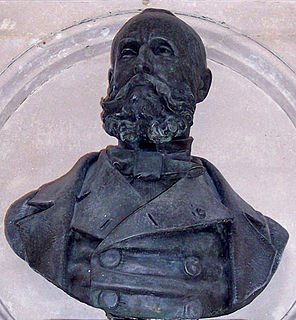
Hector-Martin Lefuel was a French architect, best known for his work on the Palais du Louvre, including Napoleon III's Louvre expansion and the reconstruction of the Pavillon de Flore.
This article presents the main landmarks in the city of Paris within administrative limits, divided by its 20 arrondissements. Landmarks located in the suburbs of Paris, outside of its administrative limits, while within the metropolitan area are not included in this article.

First Consul Napoleon Bonaparte moved into the Tuileries Palace on 19 February 1800 and immediately began to re-establish calm and order after the years of uncertainty and terror of the Revolution. He made peace with the Catholic church; masses were held again in the Cathedral of Notre Dame, priests were allowed to wear ecclesiastical clothing again, and churches to ring their bells. To re-establish order in the unruly city, he abolished the elected position of the Mayor of Paris, and replaced it with a Prefect of the Seine and a Prefect of Police, both appointed by him. Each of the twelve arrondissements had its own mayor, but their power was limited to enforcing the decrees of Napoleon's ministers.

During the Restoration of the Bourbon monarchy (1815–1830) that followed the downfall of Napoleon, Paris was ruled by a royal government which tried to reverse many of the changes made to the city during the French Revolution. The city grew in population from 713,966 in 1817 to 785,866 in 1831. During the period Parisians saw the first public transport system, the first gas street lights, and the first uniformed Paris policemen. In July 1830, a popular uprising in the streets of Paris brought down the Bourbon monarchy and began reign of a constitutional monarch, Louis-Philippe.

The expansion of the Louvre under Napoleon III in the 1850s, known at the time and until the 1980s as the Nouveau Louvre or Louvre de Napoléon III, was an iconic project of the Second French Empire and a centerpiece of its ambitious transformation of Paris. Its design was initially produced by Louis Visconti and, after Visconti's death in late 1853, modified and executed by Hector Lefuel. It represented the completion of a centuries-long project, sometimes referred to as the grand dessein, to connect the old Louvre Palace around the Cour Carrée with the Tuileries Palace to the west. Following the Tuileries' arson at the end of the Paris Commune in 1871 and demolition a decade later, Napoleon III's nouveau Louvre became the eastern end of Paris's axe historique centered on the Champs-Élysées.




